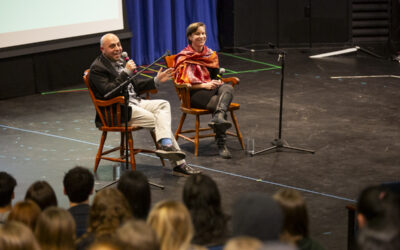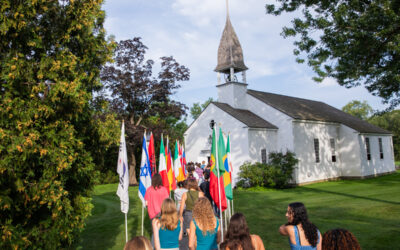I want to thank families, teachers, students, and advisors for helping to begin this academic year in a strong way! Combining the first three days of classes with a truncated drop/add period was challenging, but ultimately a necessary adjustment to our traditional system. I’m grateful for everyone’s flexibility and grace through that process. I also wanted to update you on conversations we’re having around out-of-class work expectations and screen time.
Throughout the summer, faculty have been hard at work tailoring their lesson plans to accommodate this new system. Teachers have done well to adopt this new program and to offer time in class for students to begin out-of-class work. As with any new system, there is a learning curve that takes time to adjust to. We asked faculty to abide by the following guidelines for out-of-class work for remote learning: for 9th and 10th graders, no more than 2 hours per week per class (roughly 30 minutes per class per night); for 11th and 12th graders, no more than 3 hours per week per class (roughly 40 minutes per class per night). Faculty have been allowing for time during their 70-minute classes for students to begin their out of class work; any work assigned on top of that should not exceed the guidelines offered above. We’ve asked faculty to be mindful of the amount of screen time needed to complete out-of-class assignments as we want to ensure that students have sufficient time to step away from their screens each day.
Opening-of-school adjustments are commonplace for every school in every year. This year we have noted that it has been quite some time since both teachers and students have worked together on finding the right balance of out-of-class work, and that we are all adjusting to new routines. The work of creating classroom communities takes time, especially in a remote setting. I’ve asked teachers to commit to doing this work and they’ve agreed that it’s vital to ensure the success of this program. We don’t want students feeling overburdened with out-of-class work but we also recognize that, as much as it will take time for teachers to make necessary adjustments to their lesson plans, it will also take students time to get back into the rhythm of out-of-class work. Flexibility and understanding are two important values we all need to hold this academic year. I would also ask students to continue to communicate with teachers and advisors if and when issues arise. Students will have the opportunity to complete mid-STAC course check-ins next week for each of their classes, to further contextualize how they are experiencing their course load and the start of school. As always, if you have any questions or concerns, please don’t hesitate to reach out.
Thanks,
Rob Munro
Dean of Academic Program and Equity


